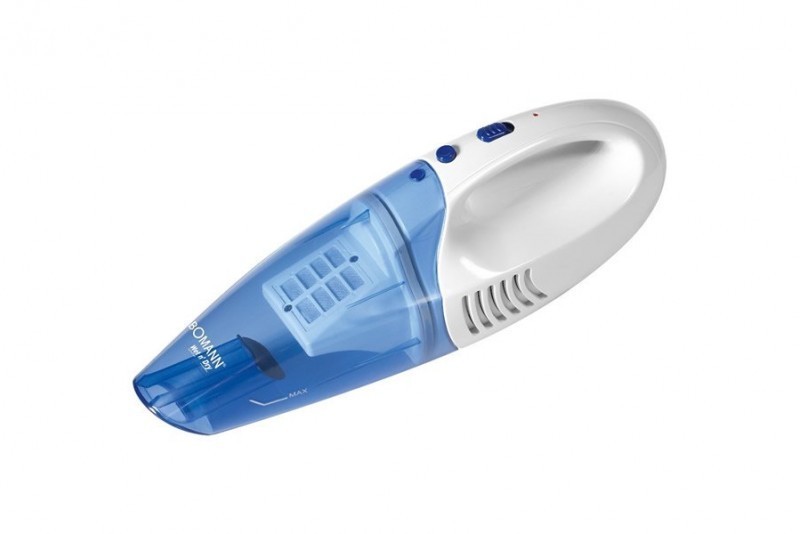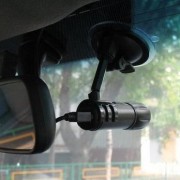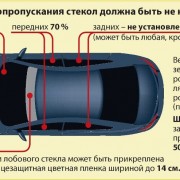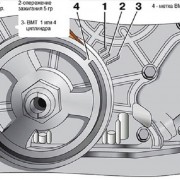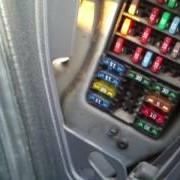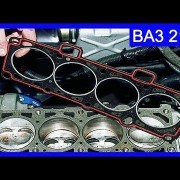Пежо 306
Motorsport
Peugeot 306 Maxi
The Peugeot 306 Maxi competed in Group A of the French and World Rally Championship. The GTI version of the car also won the Spa 24 hours endurance race in 1999 and 2000.
The car took the Danish Touringcar Championship in 1999, 2000 and 2001, and the
Asian Touring Car Series title in 2000, 2001 and 2002.
Alan Morrison driving the «VIP Touring Car Club» Peugeot 306 GTi
The Peugeot 306 GTi was a common car in the BTCC from 2000 to 2003. In 2000, the entry of one 306 GTi was that of Alan Morrison driving for Vic Lee Racing in Class B, which was made up of smaller and slower cars. He finished first in class (12th overall) in the first race at Brands Hatch. Morrison gained a lead over James Kaye. By the end of the season, he had 13 wins in his class and that had just given him the win with the 306 with 264 points, just 4 points ahead of Kaye with 260 points. Other entries included Will Hoy, Lee Linford, Toni Ruokonen and Dan Eaves. The other 306 drivers for the team: Hoy, Linford, Ruokonen and Eaves, all scored points. Ruokonen and Eaves both scored podium finishes.
In , saw more entries of the 306 GTi. Two HTML-sponsored 306s were entered for the season in the Production class with Norwegian driver Roger Moen, and Simon Harrison. Harrison and Moen finished in a 1-2 formation in the first race. Roger took another second place in race two. On many occasions, the duo finished close together in almost every race. After eleven podium finishes between them, they finished 1st and 3rd in the championship standings with Simon Harrison having 227 points and Roger Moen, 212 points. Tech-Speed Motorsport entered two 306s with Paul O’Neill and Annie Templeton at the wheel. O’Neill’s best finish was a 2nd in class (6th overall), Templeton’s was a 6th in class (11th overall). O’Neill finished 8th with 74 points and Templeton 19th with 21 points. Tom Boardman entered the season with his own 306 as well. Boardman’s season wasn’t rough , his best finish was a 3rd place in class (7th overall). Boardman finished the season 11th in the standings with 66 points.
The end of the line
Despite Peugeot’s efforts, the car placed poorly in a variety of ownership and customer satisfaction surveys of the time, such as the annual JD Power survey which was run in association with the BBC Top Gear television programme. Nevertheless, the car featured in the Top 10 Best Selling Cars In Britain from 1994–1998, and only narrowly missing out on the top 10 during its final three years on sale. Sales in France and most of the rest of Europe were also strong.[citation needed]
In Australia a run-out model was introduced in early 2001. Based on the N5 XT 5-door model, it was called the 306 Rallye. As with other XT variants, it had the same 99 kW/132 bhp engine and 5-speed gearbox as the late XSI models but different (less sporty) suspension and interior trim. It was also available in automatic. It replaced the XT model in the lineup and was discounted by AU$2000. This model was different from the 306 Rallye sold in the UK in 1998 — 99, which was a 3-door car based on the 306 GTI-6.
The hatchback 306 was discontinued in 2001 to make way for its replacement, the Peugeot 307. The cabriolet and estate variants both remained on sale until 2002. The slow–selling saloon was axed from the United Kingdom market in 1999, but it was still available in the rest of Europe until 2002.
306 Phase 2
| Phase 2 (N5) | |
|---|---|
| Overview | |
| Production | 1997–1999 |
| Powertrain | |
| Engine |
Petrol engines:
1.4L 8V 75 PS (55 kW; 74 hp) I4 1.9L 8V 90 PS (66 kW; 89 hp) Turbocharged I4 |
The 306 underwent the only major revamp of its life in May 1997, with the launch of the «Phase 2» version (N5 in Australia). The basic shape remained the same, but lights, grille and bumpers were redesigned in an effort to bring the styling into line with the new, more rounded, Peugeot family look established with the Peugeot 406. Indicator lamps were now incorporated into the headlamp unit and the new style «block filled» Peugeot lion logo was adopted. The Phase 2 also saw the addition of an estate version.
Phase 2 Peugeot 306 rear
Phase 2 Peugeot 306 break
1999–2002 Peugeot 306 (N5) cabriolet, Australia
A new-style typeface for the car’s model number was adopted on the tailgate, removing the black plastic backing. There were also some changes to the dashboard layout, including a digital odometer, and trim quality which freshened up the car in the face of increasingly stiff competition from other manufacturers. New engines were also offered, with both 1.8 and 2.0 petrol engines gaining 16-valve cylinder heads together with modest power increases. At this time, the previous trim designations were replaced by L, LX & GLX for the UK market. XS, XSi and GTI-6 models continued as before, but with the Phase 2 headlight, grille, bumper and other cosmetic updates alongside the rest of the range.
Cars from 1998 onwards (1999 model year) received further enhancements, including an aluminium-effect centre console on certain versions and a chrome Peugeot logo on the steering wheel. Other updates included removal of the black strip on the bootlid, colour-coded bumpers on some models and new upholstery in the cabin.
New models also appeared in Phase 2 trim. Sold only in the UK, the Rallye was launched in 1998 using the mechanicals from the GTI-6, but with less standard equipment (manual windows and mirrors, no air-con, Rallye-specific cloth instead of leather and alcantara, front spot lights removed), making it 65 kg (143 lb) lighter than the GTI-6. Sold at a discounted price of £15,995 (over £2000 less than a GTI-6), it only came in four colours — black, Cherry Red and Bianca White and one only in Dragoon Blue — and there were only 501 produced. The only drawback is the insurance costs as the Rallye is in group 16. As the production of the Rallye straddled the Phase 2 and 3 models, some Rallyes had superficial Phase 3 features such as the flush glass tailgate and slightly different bonnet, but remained fundamentally a Phase 2 model in such characteristics as the fuse box and electrical layout. The UK Rallye is different from the 2001 Australian market N5 Rallye, which was based on the 5-door XT model. In 1998 Peugeot has launched SP version — denotes sport pack, there have 3 different levels of equipment.
The Meridian model (originally a special edition) was also relaunched in 1999 and boasted a generous equipment list including new half-leather seats, and further cosmetic upgrades to the interior.
Safety
In 1998, Euro NCAP tested the 306, and it scored three out of five stars for protection of the adult occupants. This was a competitive performance as the 1999 Ford Escort only achieved two stars, but the newly introduced 1999 Ford Focus and 1998 Vauxhall/ scored four stars.
Australian Used Car Safety Ratings (UCSR) gave the Peugeot 306 a 4-star rating (out of 5 stars) for driver and occupant safety, and an «excellent» rating for other road users involved in accidents. UCSRs are based on statistics collected from car crashes involving death or serious injury in Australia and New Zealand between 1990 and 2013. Over seven million police reported crashes were analysed in the latest UCSR. Ratings reflect the relative safety of vehicles in preventing severe injury. Driver protection ratings indicate relative safety of vehicles in preventing severe injury to their own drivers, whilst protection for other road user ratings indicate how well the vehicle protects other road users with which they collide.
306 Phase 3
| Phase 3 | |
|---|---|
| Overview | |
| Production | 1999–2002 |
| Powertrain | |
| Engine |
Petrol engines:
1.4L 8V 75 PS (55 kW; 74 hp) I4 2.0L 8V 90 PS (66 kW; 89 hp) Turbocharged common rail I4 HDi |
Phase 3 Peugeot 306 3-door
Peugeot 306 Break
Peugeot 306 sedan
Models from mid-1999 saw further improvements and exterior modifications, including clear lenses on the headlamps, round and clear lensed foglamps, complete colour-coding of the exterior trim, removal of the black plastic strip on the lower edge of the tailgate, flush glass seal to rear windscreen, a redesigned tailgate rear badge, different rear wiper and new paint colours. Interior upgrades were more minor, with the gearknob becoming rounder and silver topped, while the instrument binnacle received a silver background and white instrument needles in place of the previous red versions.
XSi, XT and D Turbo models all received the GTi-6’s bodykit and interior styling additions but not the cyclone alloy wheels. In the diesel variants, the ageing XUD engine was replaced by the newer, HDi engine, which featured common rail injection. Some base models made use of the normally aspirated diesel engine. Almost all models included ABS and multiple airbags as standard equipment. Rain sensitive automatic windscreen wipers were also standard on all but the base spec.
Background
The 306 was developed between 1990 and 1992 for a launch at the beginning of 1993. It was a replacement for the Peugeot 309 (which had broken with Peugeot’s normal ascending numbering system partly due to it being released before the older and larger Peugeot 305 was axed).
Concept versions of the 306 were first seen around the end of 1990, although the motoring press initially reported that it was going to replace the smaller . However, by the end of 1991, Peugeot had confirmed that the new car was going to replace the 309, as well as some versions of the 205, which was going to remain in production for several more years, despite the launch of the entry-level supermini in September 1991.
Mechanically, the 306 is virtually identical to the Citroën ZX, which was launched two years before the 306: both cars use the same floorpan and core structure. The 306, with its attractive Peugeot 205 derived Pininfarina styling, was a more successful car than its twin. The Citroën Berlingo and Peugeot Partner were also built on the same platform. The chassis used by the 306 and ZX was also used in the ZX’s replacement, the Citroën Xsara. The sharing of platforms between Peugeot and Citroën has been parent company PSA Peugeot Citroën policy since the late 1970s, after the Peugeot takeover of the then bankrupt Citroen in the wake of the 1974 oil crisis. The first example was the Peugeot 104 based Citroën Visa and Citroën LNA and Talbot Samba. The policy continues today throughout the Peugeot and Citroën ranges. The entry level Peugeot 108, Citroën C1 and Toyota Aygo though are all based on the same Toyota design, and not a PSA one.
